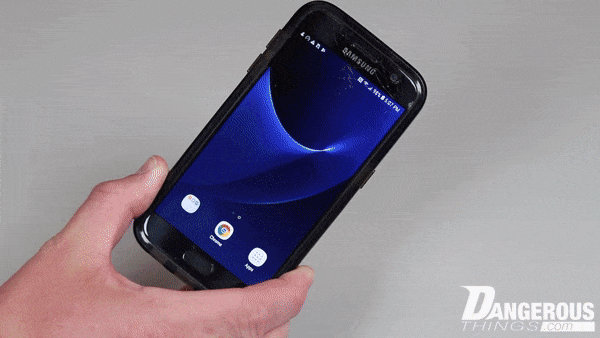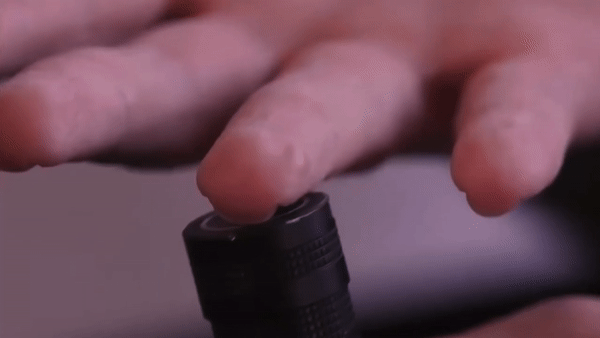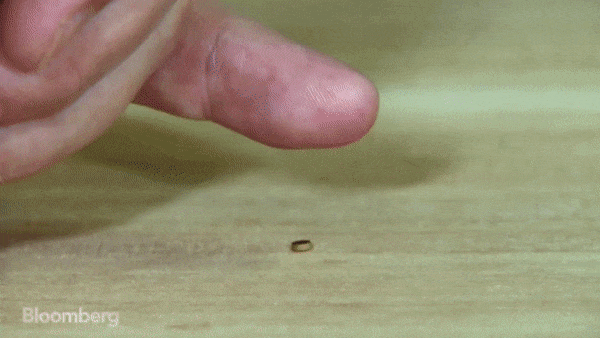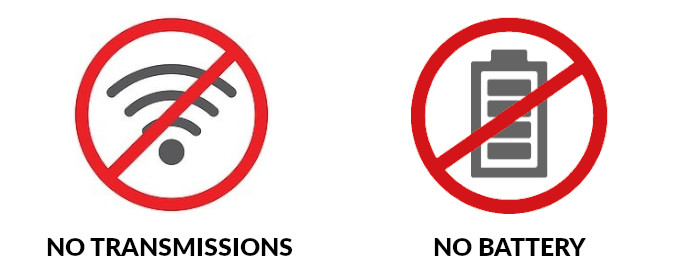Hi there!
My name is Amal Graafstra and I’m the founder and CEO of Dangerous Things. I’ve had at least one microchip implant in my body since 2005. I wrote a book called RFID Toys in 2007, and I’ve been experimenting with, designing, manufacturing and selling biohacking implants since starting Dangerous Things in 2013.
What this primer covers…
- What is biohacking?
- Types of biohacking implants
- The basics of RFID chip implants
- Different chip implant designs
- Chip implants can’t do that
- What can chip implants do?
- The basics of magnetic implants
- Implantable magnet products
- How are biohacking implants safely installed?
What is biohacking?
I gave a TEDx talk in September 2013 that can actually serve as a pretty good introduction to biohacking in general, and I show off a few things I could do with my chip implants. I suggest watching this first before we dive into the technology.
Types of biohacking implants
There are two types of biohacking implants we focus on at the moment, passive RFID transponder implant (aka “chip implants”) and magnetic implants (biosafe magnet implants). Our chip implants are popular for identity and access control applications, while our magnetic implants are commonly used for magnetic field sensing and magnetic interaction applications.
The basics of RFID (chip implants)
RFID is an acronym for Radio Frequency IDentification, which is a broad term describing anything you can identify using radio waves like radar, cell phones, wifi, etc.
However, our chip implants are passive RFID devices, meaning the chip implants have no power source of their own and do not transmit anything using radio waves! Instead, our chip implants get their power and communicate data using a very short range shared magnetic field. Here’s a quick explainer video that quickly details the difference between an active transmitter and a passively coupled RFID device.
There are many reasons to use passive RFID technology in our chip implant products, but the most important are safety, extremely short operating range, and batteryless operation - no need to charge or change batteries!
These limitations actually provide two great benefits - better privacy and a hassle-free, managementless experience. Once your upgrade is installed, you never have to manage it or worry if it’s charged. It’s always ready to work for you.
Different chip implant designs
We offer two different designs for our chip implants, x-series products and flex line products. You can read about the differences in the linked post below.
Chip implants can’t do that!
Because chip implants don’t have a battery and can only use magnetic fields to communicate, there are some basic things chip implants just can’t do no matter what Hollywood movies say.
- Can’t track anything like GPS
- Can’t continuously monitor biodata
- Can’t interact with neurons or brains
What can chip implants do?

The primary use cases for human use of such technology is access control of some kind. Accessing homes, gyms, offices, cars, etc. by either copying an existing key card or fob or token to a chip implant, or by enrolling a chip implant with a system as a new card or fob.
Sharing data over NFC with smartphones is another popular application, as well as contactless payment. All of these applications are typically possible, but achieving them is not always so simple. Explaining exactly how to perform these functions using which chip implant technology is outside the scope of this quick tech primer, but I have linked specific posts below that cover in detail some of the more popular applications.
![]() Sharing information with NFC enabled smartphones
Sharing information with NFC enabled smartphones
![]() Accessing your home / car with a chip implant
Accessing your home / car with a chip implant
![]() Copying access cards / fobs / badges to a chip implant
Copying access cards / fobs / badges to a chip implant
![]() Logging into your computer with a chip implant
Logging into your computer with a chip implant
![]() Making contactless payments with a chip implant
Making contactless payments with a chip implant
The basics of magnetic implants
A magnetic implant is just that - an magnet coated or protected in biosafe material that can safely be implanted.
The two most popular reasons someone may want to implant a magnet are sensing and interaction. With a small magnet implanted into an area of the body that is dense with nerve endings like the pads of the fingers, whenever that magnet encounters a magnetic field it will move. That movement, however small, will be picked up by the nerve endings around the magnet implant, and you will effectively be able to sense magnetic fields by feeling that movement.

The magnificent magnetic members of our biohacking community forum describe below what it’s like to have a magnetic implant. If you are at all interested in experiencing magnetic fields, I highly recommend you peruse the thread linked below.
The interaction aspect of having a magnetic implant has to do with lifting objects (paperclips are a popular one) and interacting with magnetic sensors in devices. For example, when I had a magnet in my left hand pinky (smallest) finger, I could position it just to the left of the TAB key on they keyboard of my Macbook Air to trick the lid-close sensor into thinking the laptop lid was closed, and the screen would immediately go dark. In this way I had a built-in emergency privacy protection method so if I felt anyone was shoulder surfing I could just extend my finger to the left and blank the screen. Removing my finger immediately brought the screen back to normal function.

Implantable magnet products
-
xG3 v1 - This is an axially magnetized implantable magnet that has magnetized poles on each end or tip of the cylindrical magnet. This implant is considered to be somewhat better for sensing applications vs lifting applications (though the v1 can still lift).
-
xG3 v2 - The v2 is the diametrically magnetized version of the xG3. The poles split the cylinder in half length wise, rather than magnetize each end. This is the ideal design for lifting larger objects.
-
Titan - The world’s most robust implantable magnetic implant, designed to medical grade standards. If you want the best, consider the Titan.
How are biohacking implants safely installed?
Our x-series implants are injectable devices which should be easily installable by medical professionals or professional body piercers (not tattoo artists). We partner with such professionals and maintain a map of these partners.
Other devices like flex implants and magnets like the Titan will require more advanced installation methods. In these cases you will want to involve a professional surgeon or a professional body modification artist who can safely use scalpels and sutures. We also partner with such professionals, represented on our partner map by red pins.




